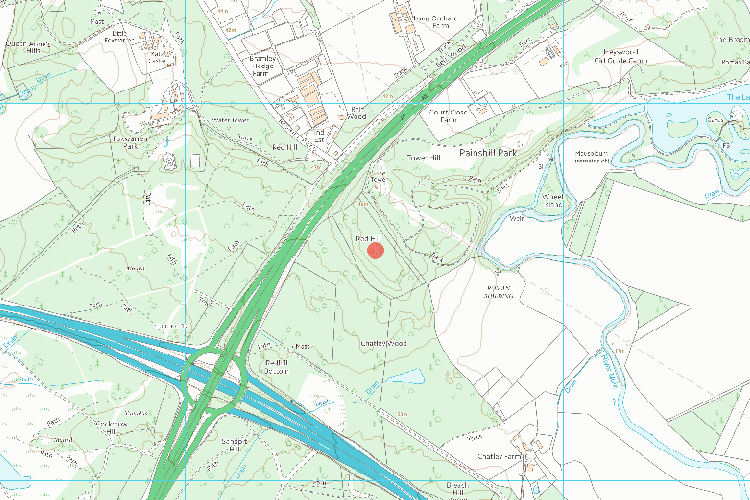Cost-effective environmental imaging services combining camera drone and cloud technology
As a drone pilot and operator registered with the Civil Aviation Authority (CAA) in the UK I’m able to offer a variety of commercial services in open countryside locations.
Mapping
On one privately owned site in the Surrey Hills AONB I mapped 32 hectares (79 acres) of part ancient, mixed broadleaf woodland.
Thousands of individual images were stitched together to create an orthomosaic, which was then exported as individual GeoTIFF tiles compatible with GIS software. Very high resolution single images can also be generated (2cm/pixel).
Mapping missions were flown at different times of year to observe seasonal variation.
Analysis
Spectral analysis techniques allow aerial imagery to be used for environmental monitoring at landscape scale. The image below compares visual spectrum vs. enhanced NDVI processing to study plant health.


Change detection
Orthomosaic images facilitate accurate measurement to inform effective land management. The aerial map below quickly measured the extent of a heathland fire at Thursley Common NNR in Surrey for Natural England.

Monitoring
Below is an aerial survey of a Homes England residential development at the point where a new access road crosses a river valley intended to form a ‘green corridor’ for wildlife. Orthomosaic, NDVI and elevation visualisations are compared.
This short animation shows the image resolution (~2cm/pixel) attained from the same drone survey mission flown at an altitude of 100m.
Timelapse
By layering orthomosaic images created in different seasons it’s possible to create a wide area timelapse sequence, as shown below.
Drone vs. satellite
Drones and satellites offer complementary technologies for aerial imaging, but camera drones enjoy a few advantages:
- Resolution
Satellites cannot compete with drones for detail. Satellite images will allow you to see individual trees, but with a drone it’s possible to distinguish each leaf. - Perspective
Satellites are restricted to flat overhead perspectives. A well-operated drone can film or photograph any subject from almost any angle. This can assist in the capture of digital elevation models using 3D point clouds. - Urgency
You don’t need to wait for cloud cover to clear before flying a drone survey! If clouds obscure your satellite image you have no option but to schedule another attempt… and cross your fingers.














